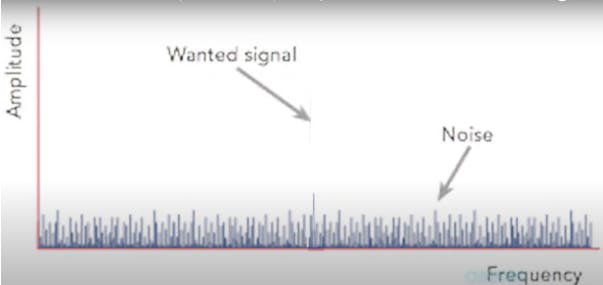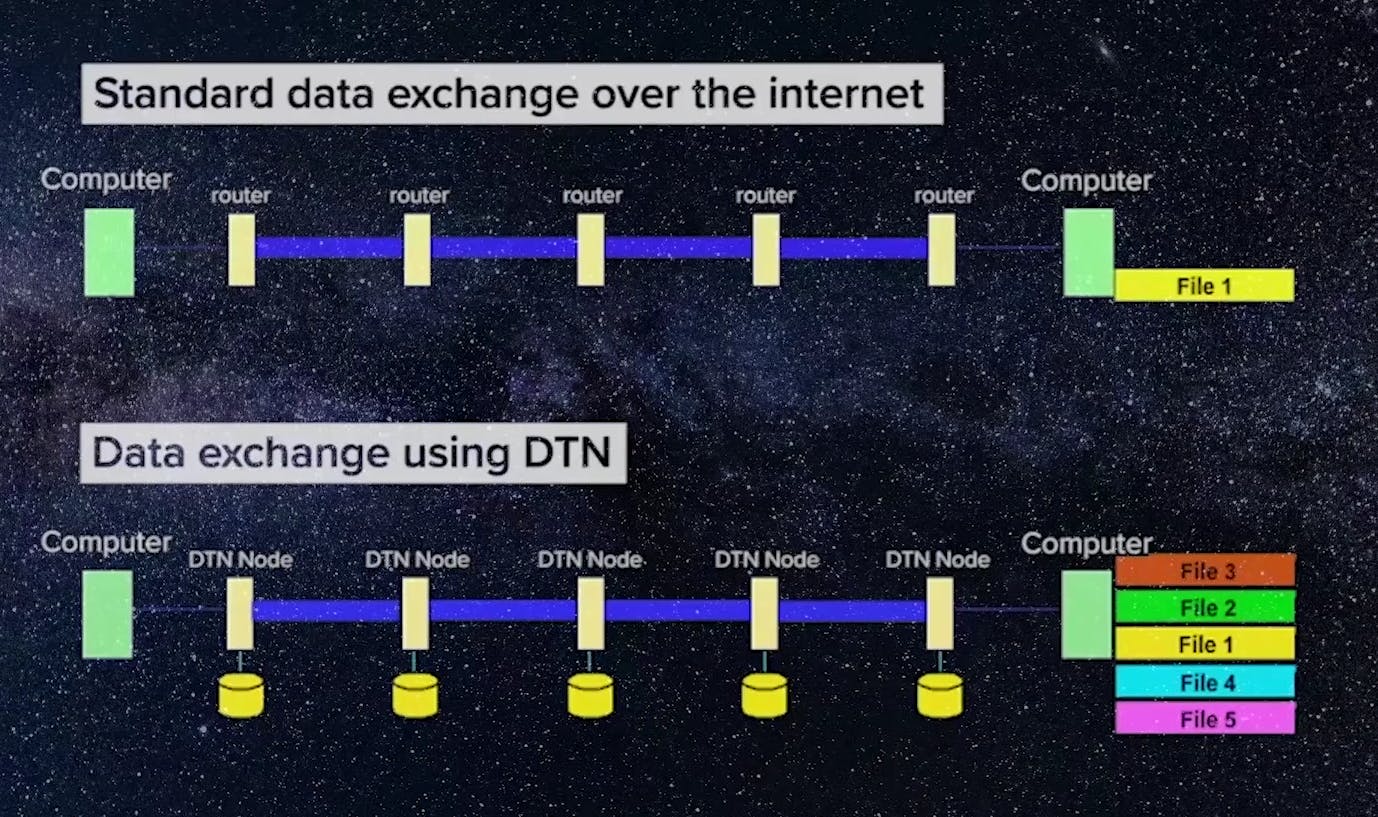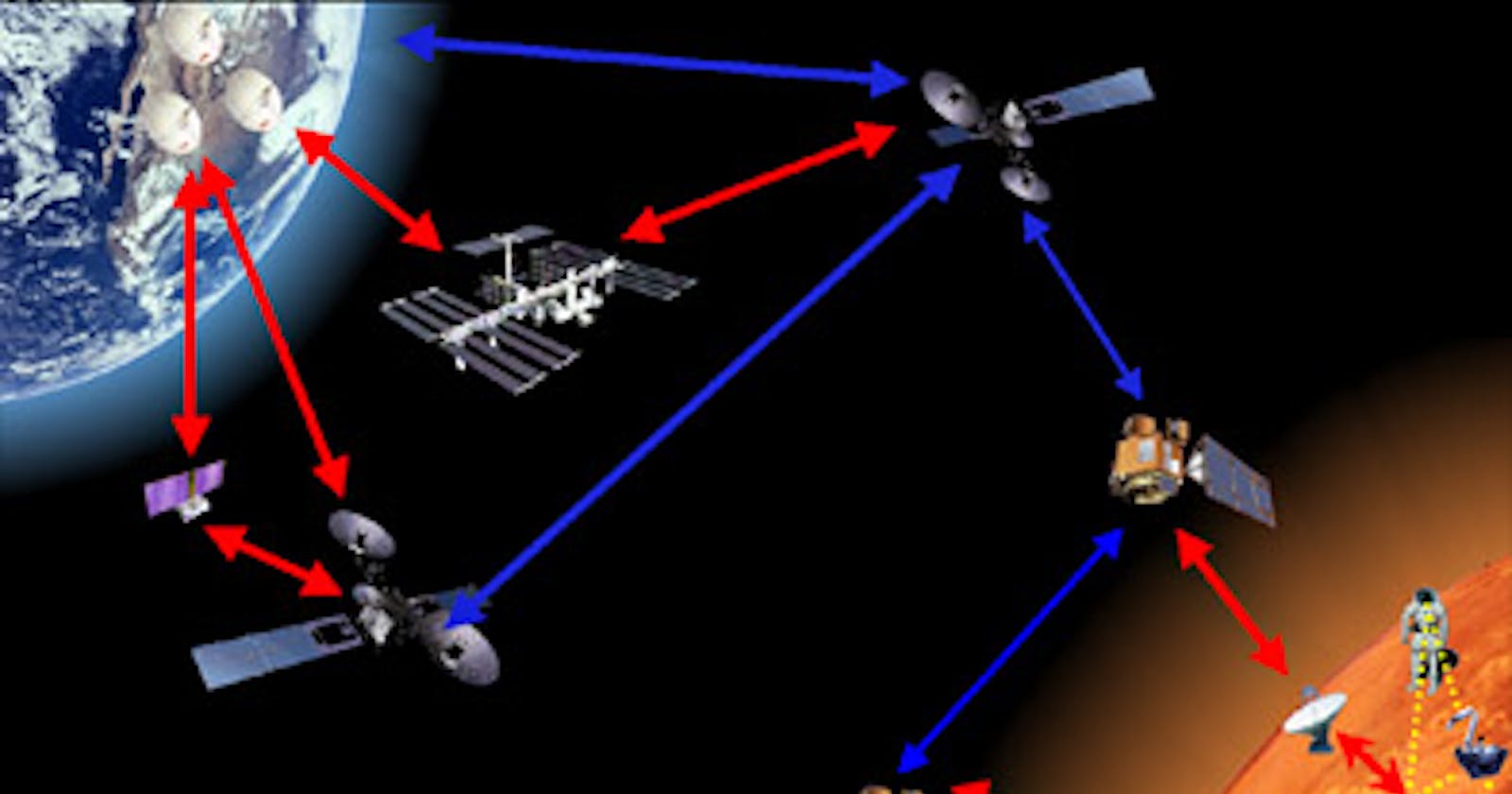All of us must have been fascinated by the majestic Space and always wanted to learn about the mysteries that keep revolving around it.
We would try to explore the basic functioning of internet communication in Space.
Need for Inter-Planetary Internet and Limitations of Radio Waves
Communication with the spacecraft that go out into space can be drastically slow (similar to the 1990’s Dial-Up speed) because of the limitations of Radio waves even though they travel at the speed of light.
This was insufficient for the telemetric and video data that the rovers and space crafts would generate.
Even the speed of light is not enough to guarantee real-time communication in space.
For example - The round trip delay from earth to pluto is about 9 hours.
Radio waves follow the Inverse Square law, which means that with each doubling of distance, we get ¼ th of the power.
Hence for long distances, the target signal would get lost as it will become indistinguishable from the environment noise.

Existing Solutions
The International Space Station provides data connections (at a very slow connection speed) for astronauts for spoken communication with the base station. So this doesn't seem to be the best solution.
Inter Planetary Internet
Interplanetary communication is greatly delayed by interplanetary distances, so a new set of protocols and technologies that are tolerant to large delays and errors are required.
The interplanetary Internet is a store and forward network of the internet that is often disconnected and has a wireless backbone fraught with error-prone links and delays ranging from tens of minutes to even hours, even when there is a connection.
Delay-tolerant networking (DTN) was designed to enable standardized communications over long distances and through time delays. At its core is something called the Bundle Protocol (BP), which is similar to the Internet Protocol, or IP, that serves as the heart of the Internet here on Earth. The big difference between the regular Internet Protocol (IP) and the Bundle Protocol is that IP assumes a seamless end-to-end data path, while BP is built to account for errors and disconnections — glitches that commonly plague deep-space communications.

Bundle Service Layering, implemented as the Bundling protocol suite for delay-tolerant networking, will provide general-purpose delay-tolerant protocol services in support of a range of applications: custody transfer, segmentation and reassembly, end-to-end reliability, end-to-end security, and end-to-end routing among them.
- Packetized data is transmitted via frames, which are fixed-length data blocks. The size of a frame, including frame header and control information, can range up to 2048 bytes.
2. Even when the channel errors exceed the correction capability of the error-correcting code, the presence of errors is nearly always detected by the error-correcting code or by a separate error-detecting code.
3. Frames for which uncorrectable errors are detected are marked as undecodable and typically are deleted.
The field of interplanetary internet is ever-expanding, in this blog, The basic overview of the architecture has been explained.

